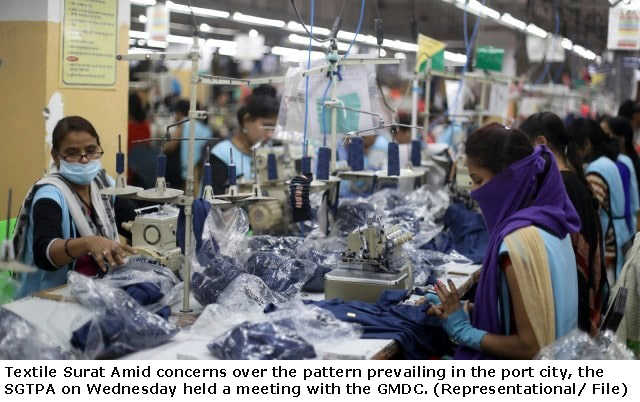
Category: General
Country: India
Region: Asia
Over 350 textile dyeing and processing units in Surat use lignite from Tadeshwar and imported coal from Indonesia as fuel for the boilers.
By: Express News Service
Ahmedabad | May 23, 2024 01:04 IST
Even as lignite scarcity has choked textile units in Surat over the last few years, around 350 mills in Surat are unlikely to face hassles this monsoon season. The Gujarat Mineral Development Corporation (GMDC) has assured the South Gujarat Textile Processing Association (SGTPA) of ample stocks of the fuel used to fire boilers in textile mills.
Amid concerns over the pattern prevailing in the port city, the SGTPA on Wednesday held a meeting with the GMDC.
SGTPA chief Jitu Vakhariya and board members, including Vinod Agrawal, among others were in attendance at the meeting. Over 350 textile dyeing and processing units in Surat use lignite from Tadeshwar and imported coal from Indonesia as fuel for the boilers.
Sharing more details about the meeting, SGTPA chief Jitu Vakhariya said, “During the monsoon season, the industry faces problems of supply of imported coal, which is too costly and lignite supply also remains an issue. The GMDC takes out lignite from the project at Tadeshwar in Surat. During the rainy season, the mining activity stops. At the meeting today, officials assured that there would not be an issue with lignite supply this year as they have made surplus stock of lignite coal from the mines.”
He further added, “We have also demanded the rates of lignite coal should be reduced. The price of imported coal is Rs 6,000 to Rs 7,000 per tonne… and its calorific value is between 5,200 to 5,500 while the price of lignite coal of Tadkeshwar is between Rs 4,000 to Rs 4,500 per tonne, and the calorific value is between 4,000 to 4,200.
Generally, the mill owners use a mixture of imported coal and lignite coal.”
SGTPA member Vinod Agrawal highlighted, “A dyeing and printing mill requires around 30 to 40 tonnes of lignite coal daily. If the quality of lignite coal is good… the quantity of usage goes down.”
Courtesy & ©: The Indian Express Pvt Ltd | First uploaded on: 23-05-2024 at 01:04 IST
Copyrights © 2025 GLOBAL TEXTILE SOURCE. All rights reserved.